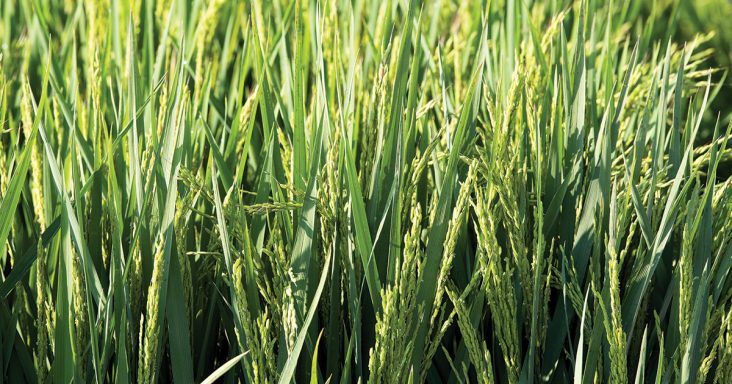Rice crop rebounds in 2023; cotton acres down
by July 10, 2023 1:41 pm 912 views

Despite myriad forces facing rice farmers in 2023, the U.S. Department of Agriculture’s Natural Agricultural Statistical Service (NASS) now projects that about 1.311 million acres of the crop have been planted in Arkansas. That’s nearly 200,000 more acres than were planted in 2022, according to the latest NASS report released June 30.
Nationally, about 2.687 million acres have been planted, a nearly 400,000-acre uptick since the last growing season. California ranks second in rice production with 478,000 acres, while Louisiana ranks third with about 460,000 acres.
Arkansas is annually the highest rice producing state and typically produces about half the crop grown in the U.S.
Diagnosing problems in rice, farmers have a lot to choose from including disease, drought, flood, insects, soil health and weeds. However, Jarrod Hardke, extension rice agronomist for the University of Arkansas System Division, is adding a new possibility to the list – lightning.
In his latest “Rice and Advice” episode on YouTube and Instagram, Hardke showed an oddly shaped patch of young row rice that seemed to have more cracked and bare soil than rice.
“Right off the bat, you can see the rice in this area definitely has a problem,” he said. Pulling closer and pointing to some blackened plants, “This rice pretty much looks like a crispy critter.”
Hardke said the irregular shape of the affected area “can be explained by the lightning hitting it when the water is on the field.”
Often when a lightning strike happens in a rice field without water, the resulting pattern is “more of a circular appearance overall to the affected area. Right at the center, there will be maybe a one- or two-foot circle that just looks like a burnt little hay-filled spot in the middle of a bullseye.”
But if it hits standing water, “there’s no telling which direction it’s going to go,” he said. “Flood depth and a lot of other factors are going to change the impact on the rice and everything surrounding it.
“It’s really just one of those oddities,” Hardke said.
Another staple row crop in Arkansas, cotton, is down significantly this year.
Cotton planted acres are estimated at 11.1 million, down 19% from last year, nationally, NASS reported. Upland area is estimated at 11.0 million acres, down 19% from 2022. American Pima area is estimated at 109,000 acres, down 40% from 2022.
In Arkansas, about 480,000 cotton acres have been planted, a drop of about 160,000 acres from last year. The Natural State ranks fourth in cotton production this year among all states, NASS reported.
